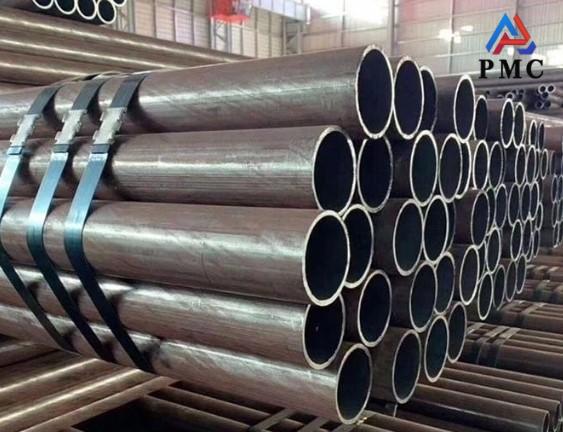
Defect Analysis of High-precision Cold-rolled Seamless Steel Pipe
High-precision cold-rolled seamless steel pipes are key materials in modern industry. Leveraging their advantages of high precision and strength, they are widely used in energy, machinery manufacturing, aerospace, and other fields, supporting the safe and stable development of these industries. However, defects can occur during production, affecting their appearance, performance, and lifespan, and even threatening system safety. Therefore, analyzing defects, identifying their causes, and preventing them is crucial.
Analysis of quality defects on the inner and outer surface of high-precision cold-rolled(cold drawn) seamless steel pipe:
The industrial control of the production of cold-rolled seamless steel pipes includes mold design, annealing, pickling, lubrication and other conditions. At the same time, it is necessary to do a good job in capillary quality inspection and renovation.
Cold rolled seamless steel pipes are prone to some defects in the production process, which will directly lead to the performance requirements of cold rolled seamless steel pipes, and even produce certain risks during use, such as: cracks, internal Folding, external folding, crushing, separation, scarring, concave pulling, convex hull, etc. Therefore, these defects must be avoided in the production process of cold rolled seamless steel pipes.
cause:
① Due to surface defects or internal defects of cold rolled seamless steel tube blanks.
② Produced in the production process, such as incorrect design of rolling process parameters, unsmooth mold surface, poor lubrication conditions, unreasonable pass design and adjustment.
③In the process of heating, rolling, heat treatment and straightening of the tube blank (cold drawn seamless steel pipe), if the heating temperature is not properly controlled, the deformation is uneven, the heating and cooling rate is unreasonable or the straightening deformation is too large. Residual stress may also cause surface cracks in cold rolled seamless steel pipes.
There are many reasons for the defects of cold rolled seamless steel pipes in the production process, which have a very large impact on the performance of cold rolled seamless steel pipes. Therefore, cold rolled seamless steel pipe manufacturers must avoid these situations during the production process.

Defect prevention and quality improvement
1. Strictly control the quality of raw materials
Raw materials are the source of quality for high-precision cold-rolled seamless steel pipes, and the steel billets must be strictly inspected: high-quality suppliers are selected for procurement to ensure that the composition of the steel billets meets the standards; spectrometers are used to measure the composition, control harmful elements, and ensure purity; ultrasonic testing is used to check for internal defects, and problems are dealt with in a timely manner when discovered, reducing risks from the source.
2. Optimize process operation flow
Optimizing rolling process parameters is the key to reducing defects: the optimal rolling force, speed, and temperature combination is determined through experiments and data analysis, and an automated system is used to monitor and adjust in real time to ensure stability; the deformation amount of each pass is reasonably distributed, and the deformation sequence is optimized through finite element simulation to ensure uniform deformation of the steel pipe and reduce problems such as excessive ovality and uneven wall thickness; the process design must also consider the needs of subsequent processing and use, and reserve processing allowances to ensure dimensional accuracy and performance meet standards.
3. Strengthen equipment maintenance and management
The good condition of equipment is an important guarantee for the quality of high-precision cold-rolled seamless steel pipes: a complete maintenance system must be established to regularly inspect and maintain key equipment such as rolling mills, rolls, and mandrels; use laser interferometers, roundness meters, and other equipment to detect equipment accuracy and adjust deviations in a timely manner; use laser cladding and other technologies to repair worn rolls, and determine replacement cycles based on wear patterns; at the same time, train operators to improve their skills and sense of responsibility, and standardize operations to prevent human-induced equipment failures and quality problems.
Read more: Structural Application of Cold Rolled Seamless Steel Pipes


